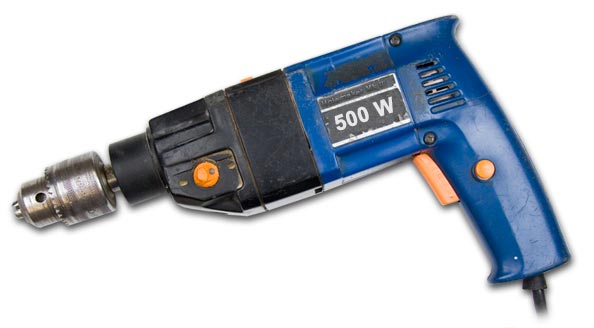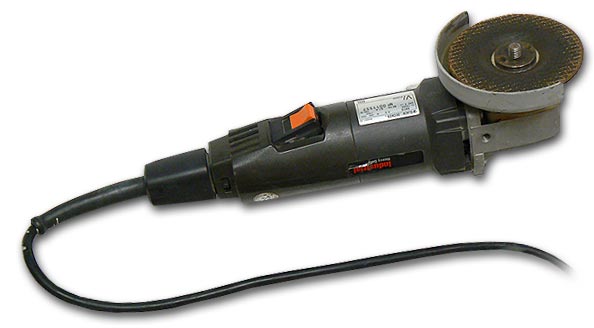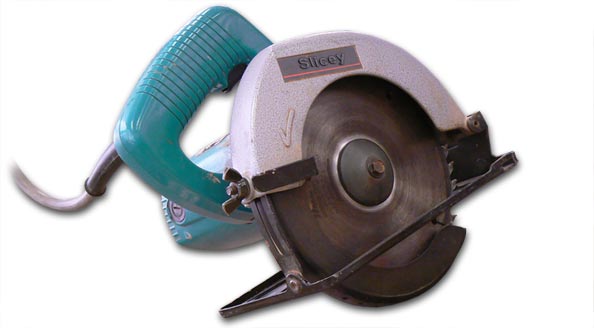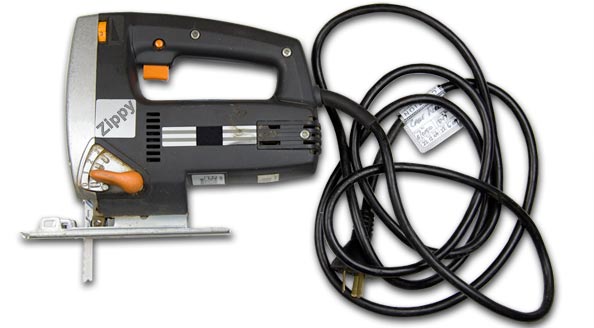Power tools
Portable mains
There is a wide variety of mains powered portable tools for all types of work. The advantage of using these tools rather than battery powered is that they tend to be more powerful, and of course don't get flat batteries. The disadvantage is the need for a nearby power source (mains power or a generator) and the safety hazards presented by power leads.
In the electrical trade, the most commonly used portable mains powered tools are drills, angle grinders, power saws and jig saws.
Drills
Different types of drills are used for drilling holes in a wide variety of materials when used in conjunction with twist drill bits, auger bits and holesaws. Hammer drill versions are used with masonry bits to drill holes in brick, concrete, etc.

Portable power drill
Some of the larger portable drills can be fitted with a chisel attachment for chasing masonry.
Angle grinders
Angle grinders are used for cutting or grinding depending on the type of disk fitted. In the electrical trade the common uses would be for cutting or grinding metal and cutting bricks and concrete.
Practical uses:
- cutting off metal strips, tube and angle iron
- chasing concrete and brickwork
- grinding welded joints flat.

Angle grinder
Circular saws
These are generally used for cutting timber but, like an angle grinder, can be used on a variety of materials depending on the blade fitted.
Practical uses:
- cutting galvanised iron roofing
- cutting openings in brickwork or concrete
- cutting fibro-cement sheet.

Circular saw
Jigsaws
Jigsaws have a reciprocating blade and are generally used for cutting curves or holes. A range of blades is available for working with different materials.
Practical uses:
- plunge cutting of plaster board
- cutting apertures in wooden or metal panels.

Jigsaw



